

 My taste and your taste
My taste and your taste
We all have our own personal taste. We enjoy different styles of wines, not necessarily the same as our neighbour. Our opinion about a wine is always personal. It is virtually impossible to give a completely neutral, yet meaningful, review of a wine. In fact, to think that there is an objective and neutral way to evaluate wine is a fundamental misunderstanding and illusory.
The discussion about natural wine puts this in a stark spotlight. A wine made with minimal intervention and no sulphur often show flavours that we are not used to and which are not at all typical either for the grape or for the region.
Some consider these wines to be defective while others are attracted by the character. For example, the wines can be oxidized, have a high level of volatile acidity (VA) or remind you of barnyard and “organic fertilizers” in particular. The appearance may be a bit cloudy and sometimes it tastes more like cider than wine.
From a purely technical point of view many people, especially those who have studied winemaking, would consider them to be faulty, although today many consumers like them.
I happened to discuss natural wines with some French wine journalists the other day. Their opinion was that “we as wine experts must teach people that a wine should not taste like this”. (And it is far from only French wine writers who say so.)
Now the debate is heating up. Who determines how a wine should taste? Perhaps the wine producer? Hardly a “wine expert”.
There are, of course, some defects a wine can have that few people appreciate, such as the smell of rotten eggs. However, most of the slightly strange flavours in a natural wine are not defects.
In my opinion.
At home we often get into debates on this, since the two of us quite often have differing opinions about this type of wines, these kinds of flavours. In most cases we have similar opinions of wine, but for this particular opinion it’s often not the case…
It is just flavours that you either like or not.
We all have different degrees of tolerance for acidity, for volatile acidity, for tannin, for brettanomyces, etc.
Is oxidation a defect? Not when it’s a Jura wine or a sherry or an old Burgundy.
Should wine experts or wine journalists teach people how a wine “should” taste? Absolutely not. But on the other hand it is their job to give their opinion about wines.
So, what can we learn from this? Never listen to just one expert.
And above all, taste yourself, without preconceived ideas. Do taste blind, without having the slightest clue what the wine is, at least occasionally.
Perhaps you are a lover of natural wine that has not yet come out of the closet? Or perhaps you actually hate these wines, when they’re not served to you by a star-sommelier in a posh restaurant or in a hipster wine bar.
The more different things you taste the more fun it is.
So – join us on one of our wine tours and you will have plenty of opportunities to taste some outstanding wines. And maybe even some delicious natural wines. More info on the wine tours in the Brief. Book your tour now!
Britt & Per
PS: Recommend to your friends to read the Brief!
– – – – – –
What’s on at BKWine Tours
Spring 2018
- Bordeaux, April 25-29
Autumn 2018
- Champagne, September 26-30
- Bordeaux, October 10-14
- Douro Valley in Portugal, October 17-21
- South Africa, November 9-19
Winter 2019
- Chile-Argentina, January 20 – February 4, 2019
- South Africa, February
- New Zealand, March 11-26, 2019
For more information please contact us on email or on phone (we’re on French time), or go to our wine travel site on www.bkwinetours.com!
We also make custom designed wine tours – on-demand tours for you and a group of friends, for your company (maybe to scout new winegrowers?), for a special event… We can combine winery visits and wine touring with other activities: gastronomic workshops, visit to an oyster farm, truffles hunting, cheese making, and more. More info on the custom designed and bespoke BKWine wine tours and travel here!
Read our book(s)
We have written several wine books, nine at the last count. One of them has been translated to English; the others are (so far) only available in Swedish. This is the one that is available in English: Biodynamic, Organic and Natural Winemaking, Sustainable Viticulture and Viniculture
All our books are on wine, but on different subjects: wines of the Languedoc, wine growing and wine making, the wines of France, Tuscany, Bordeaux, Piedmont, Burgundy, Champagne. Several have won prestigeous prizes and awards. Read more on our wine books.
From the World of Wine
In Brief
In short, news and stuff from the world of wine.
Grenache slowly moving forward in California
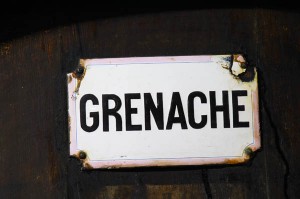 Grenache is one of the world’s most planted grapes. Most of these vines are in France and Spain. In 1982, Rhône Valley enthusiast Randall Grahm at Bonny Doon Vineyards in California made his first Grenache wines. The term Rhone Rangers was coined to describe producers with a penchant for Rhône grapes. Grenache was on its way to stardom in California.
Grenache is one of the world’s most planted grapes. Most of these vines are in France and Spain. In 1982, Rhône Valley enthusiast Randall Grahm at Bonny Doon Vineyards in California made his first Grenache wines. The term Rhone Rangers was coined to describe producers with a penchant for Rhône grapes. Grenache was on its way to stardom in California.
But inferior clones gave large grapes and diluted wines with weak colour. In the mid-1990s, Tablas Creek in Paso Robles imported better clones from Château de Beaucastel in Châteauneuf-du-Pape. Today, grenache is still a promising grape variety in California, although it has not yet reached the top-ten list. The California Grenache wines are often powerful but still with good acidity and elegance. But the grape needs to become more famous, says the Grenache growers in California. Read more about why they like grenache on winemag.com
Rain and rain and rain in Bordeaux causes problems
It doesn’t stop raining in Bordeaux. As spring progresses, wine producers face problems. It is difficult to drive the tractor and to walk in a wet and muddy vineyard. This is inconvenient for those growers who mechanically remove the weeds. Maintenance in the vineyard, such as replacing the poles that hold up the wires, is delayed. They will probably have problems early in the season with mildiou, a fungal disease.
Since November Bordeaux has had about 500 mm of rainfall (the region usually has between 600 and 800 mm per year). Rain is a good thing, but now they want it to dry up a bit so that they can start working in the vineyard. Read more here vitisphere.com.
Weather will for sure improve so there are good reasons to come on a wine tour to Bordeaux this spring with BKWine. Or alternatively a wine tour to Bordeaux in the fall.
Record year for Champagne 2017
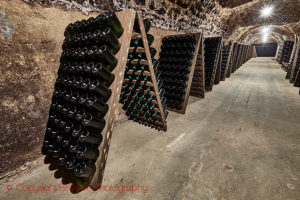 Comité Champagne has published their sales figures for 2017. Champagne made a record turnover of 4.9 billion euros in 2017. 307 million bottles were sold, a slight increase compared with 2016. The sales record counted in volume from 2007 is still valid. 338 million bottles of champagne were sold that year.
Comité Champagne has published their sales figures for 2017. Champagne made a record turnover of 4.9 billion euros in 2017. 307 million bottles were sold, a slight increase compared with 2016. The sales record counted in volume from 2007 is still valid. 338 million bottles of champagne were sold that year.
France is still the largest champagne market but now with a very, very small margin. In 2017, sales in France decreased by 2.5% to 153.7 bottles. Exports increased by 3.5% to 153.6 million bottles. The United States is the biggest export market by value. Britain is in second place, but decreased its imports in 2017 by 5.7%. Japan has increased its imports heavily and is in third place, followed by Germany and Italy. Also China, Hong Kong and Taiwan are buying more and more Champagne. “Our future is in the USA, Japan and China”, said Jean-Marie Barillère, president of Comité Champagne, according to Meninger. Read more champagne.fr
Tasting champagne in Champagne is a fantastic experience, especially on a wine tour to Champagne with BKWine. Book now!
The top-ten grape varieties in France
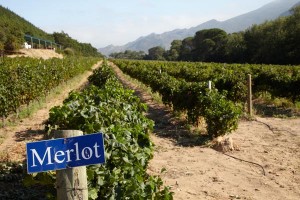 France has 806,000 hectares planted with vines. This area includes about 70,000 hectares used for Cognac. Three grape varieties take up one third of this area: Merlot (112,000 hectares), Ugni Blanc (82,000 hectares, which is used mainly for Cognac) and Grenache (81,000 hectares).
France has 806,000 hectares planted with vines. This area includes about 70,000 hectares used for Cognac. Three grape varieties take up one third of this area: Merlot (112,000 hectares), Ugni Blanc (82,000 hectares, which is used mainly for Cognac) and Grenache (81,000 hectares).
After the top three follow Syrah (64,000), Chardonnay (51,000), Cabernet Sauvignon (48,000), Cabernet Franc (33,000), Carignan (33,000), Pinot Noir (32,000) and Sauvignon Blanc (30,000). 70% of the total French vineyards are planted with these top ten grape varieties. Source: oiv.org.
Disease in the vineyard problematic for organic growers
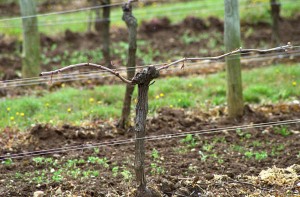 Flavescence dorée is a dreaded bacterial disease that spreads through a grasshopper. It was discovered for the first time in 1949. In France it is especially difficult in parts of the southern Rhône Valley and Provence. Here we can even see a decrease in the number of organic producers because it is mandatory in some areas to spray against the grasshopper.
Flavescence dorée is a dreaded bacterial disease that spreads through a grasshopper. It was discovered for the first time in 1949. In France it is especially difficult in parts of the southern Rhône Valley and Provence. Here we can even see a decrease in the number of organic producers because it is mandatory in some areas to spray against the grasshopper.
There is a product that the organic growers can use, based on pyrethrin. Unfortunately, in some cases, this is not so effective, which means that even organic growers sometimes have to resort to synthetic products. This means that they lose their certification. The choice can be to either see one’s vineyard devastated, or deviate from pure organic growing. Attempts are made to find other, organically permitted products. Such as the recently launched insecticides Prev-AM, Limocide and Essen’ciel. They are all based on essential oil from oranges. However, they have not yet been allowed to be used in the fight against flavescence dorée since it is not yet proven that they are effective against the specific grasshopper that spreads the flavescence dorée. The research continues. Read more on this terrible pest: vitisphere.com
New grape varieties in France, some forgotten, some hybrids
Nine new grape varieties have been approved to be planted in the French vineyards. Five of them are old, almost extinct and forgotten grape varieties from the Southwest, from Gaillac, Fronton and other southwestern appellations: Bouysselet Blanc, Tardif, Verdanel Blanc, Gibert and Noual.
The other four are so-called resistant grape varieties. These are new crosses between European grapes and various American grape varieties. These hybrids (=a crossing between vitis vinifera and another vitis variety) have good resistance to fungal diseases such as mildiou and oidium and sometimes also other diseases. The grapes are Vidoc, Artaban, Floréal and Voltis. The first two have as parents Rotundifolia, an American grape, and Regent, which in fact is a cross between a European grape and a hybrid. The idea is, of course, to reduce the need for spraying with pesticides. It will be interesting to see how these grapes are received by the wine producers. And by the wine consumers. Read more mon-viti.com.
Harvest in South Africa 2018: of excellent quality despite the drought
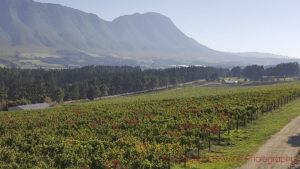 During our visit to South Africa at the beginning of March, the harvest was in full swing. The very difficult, and prolonged, drought in the wine regions of the Western Cape affects the grapes of course. But most of the producers we met told us that although the volume in most places will be small this year, the quality is good, sometimes even very good.
During our visit to South Africa at the beginning of March, the harvest was in full swing. The very difficult, and prolonged, drought in the wine regions of the Western Cape affects the grapes of course. But most of the producers we met told us that although the volume in most places will be small this year, the quality is good, sometimes even very good.
Peter-Allan Finlayson at Gabrielskloof (where he is the wine maker and where he also makes his own wines under the Crystallum brand), says that 2018 will be a small harvest but of good quality. “We harvest early this year to maintain freshness,” he says. At Springfontein in Stanford, wine maker Tariro Masayiti agrees. He is very pleased with the quality and maturity of the grapes. And at the biodynamic vineyard Reyneke in Stellenbosch, Johan Reyneke says that he will even have a good volume this year, perhaps thanks to the soil (granite and sandstone), perhaps thanks to the way they work in the vineyard (e g biodynamics). We tasted the vintage 2018 during our tour, both as unfermented juice and after just finished fermentation. We all agreed it was of excellent quality!
South Africa is a treasure trove of excellent wines, many little known outside the country. Join us on BKWine’s discovery wine tour to South Africa in November. And then there will be one more wine tour to South Africa in March.
The four most popular wine countries in Sweden 2017
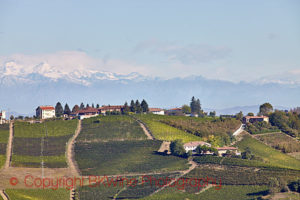 Italy shot to the top position in 2012, as the country selling most volume of wine into Sweden, and is still there. Not threatened by anyone at the moment. In 2017, 56.8 million litres of Italian wine were sold at Systembolaget, the Swedish retail monopoly. France, in second place, sold a meagre 26.5 million. The Italian dominance is absolutely incredible. Spain is number three with 21.7 million litres and South Africa number four with 20.3 million, after previously having been in the lead until Italy won that position.
Italy shot to the top position in 2012, as the country selling most volume of wine into Sweden, and is still there. Not threatened by anyone at the moment. In 2017, 56.8 million litres of Italian wine were sold at Systembolaget, the Swedish retail monopoly. France, in second place, sold a meagre 26.5 million. The Italian dominance is absolutely incredible. Spain is number three with 21.7 million litres and South Africa number four with 20.3 million, after previously having been in the lead until Italy won that position.
Looking at the statistics for red wines, we have Italy in the top slot, Spain in second place and France in third place. For white wines South Africa leads before France and Italy. France’s 26.5 million litres are divided between approximately one third red, one-third white and one-third Champagne. Quite incredible, the popularity of Champagne in Sweden. One should keep in mind when reading the numbers that a few best-selling “box wines”, bag-in-box, can have a big effect. (More than 50% of all wine sold in Sweden is in BiB.) The biggest selling wine alone accounted for 3 million litres! At 159 kr (~16 euro) for three litres (=4 bottles). It is Spanish and represents well over 10% of Spanish wine sales in Sweden. Statistics from systembolaget.se.
Features
Features that we have published during the past month, with lots of reading for you.
The real job of a wine consultant in Bordeaux, with Stéphane Courrèges | Britt on Forbes
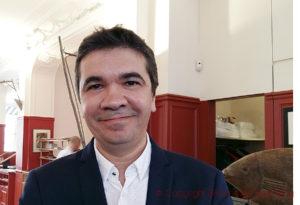 Is the consultant oenologist the most important person in the Bordeaux wine cellars? Maybe, maybe not, but few Bordeaux chateaux nowadays make their wines without one. One of these consultants is Stéphane Courrèges whom we met recently when he was in Paris for the day. Sometimes they are simply called “wine consultants” or even “flying winemakers”. Why do the chateaux need a consultant oenologist? There are several reasons, one obviously being the added knowledge an oenologist bring to the wine making process.
Is the consultant oenologist the most important person in the Bordeaux wine cellars? Maybe, maybe not, but few Bordeaux chateaux nowadays make their wines without one. One of these consultants is Stéphane Courrèges whom we met recently when he was in Paris for the day. Sometimes they are simply called “wine consultants” or even “flying winemakers”. Why do the chateaux need a consultant oenologist? There are several reasons, one obviously being the added knowledge an oenologist bring to the wine making process.
Read more in Britt’s article on BKWine Magazine, originally published on Forbes: The real job of a wine consultant in Bordeaux, with Stéphane Courrèges | Britt on Forbes.
Wine consultants, wine makers, and plenty of good wines, there are good reasons to come on a wine tour to Bordeaux this spring with BKWine. Or alternatively a wine tour to Bordeaux in the fall.
Wine tours
Some information about current and future wine tours with BKWine.
Bordeaux: 7000 “castles” and lots of vineyards | wine tour
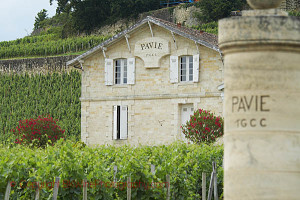 Bordeaux is one of France’s largest wine regions with 112 000 hectares of vineyards. There are about 7000 chateau (“castles”). Everyone does not make their own wine. Some sell their grapes to a negociant or belong to a cooperative. The chateaux exist in all sizes and looks. Some are no more than a regular little villa; others are beautiful Cinderella castle. The oldest are from the 16th century and classified as historical monuments.
Bordeaux is one of France’s largest wine regions with 112 000 hectares of vineyards. There are about 7000 chateau (“castles”). Everyone does not make their own wine. Some sell their grapes to a negociant or belong to a cooperative. The chateaux exist in all sizes and looks. Some are no more than a regular little villa; others are beautiful Cinderella castle. The oldest are from the 16th century and classified as historical monuments.
The most important thing is after all to have a well-equipped cellar. Some have invested in the latest equipment and have expensive grape sorting machines. Some have brand new concrete vats for the fermentation, beautiful as if in an art gallery. Some prefer stainless steel tanks, while others have not seen any need to replace the old concrete tanks from the 1960s. Everyone has a different philosophy. We will see much of all this on our wine tour to Bordeaux in April. And then in the autumn there is a Bordeaux wine tour in October too.
Harvest time in Champagne | wine tour
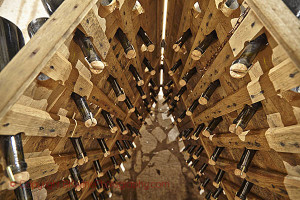 In Champagne in late September the harvest is probably in full swing (but it depends on the weather). There will be a lot of activity in the vineyards and in the cellars. This is an interesting time to visit the wine region and we will get to know some of the secrets of champagne on our wine tour. For example, how to decide that the grapes are ripe enough to be picked. We go out in the vineyard, we look at the soil, we talk about the terroir and also about organic and sustainable wine viticulture.
In Champagne in late September the harvest is probably in full swing (but it depends on the weather). There will be a lot of activity in the vineyards and in the cellars. This is an interesting time to visit the wine region and we will get to know some of the secrets of champagne on our wine tour. For example, how to decide that the grapes are ripe enough to be picked. We go out in the vineyard, we look at the soil, we talk about the terroir and also about organic and sustainable wine viticulture.
We will also discuss the current trend with extra brut and brut nature, that is the very dry Champagnes, and other interesting topics. And taste lots of great wine and food of course. In other words, after the tour, you will know a lot about champagne. And maybe even more important: You will have tried a lot of Champagne! Some of these Champagnes will be drunk during our amazing lunches. Join us on the wine tour to Champagne in September.
(By the way, our latest book, that was on Champagne, has won prize as the best book on French wines in the Gourmand Awards Sweden.)
Douro Valley: spectacular landscape, local grape varieties | wine tour
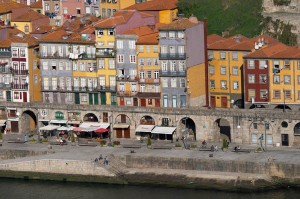 Portugal has its own local grape varieties, few known outside the country. During our tour to the amazing Douro Valley in the northern part of the country we will encounter many of them: touriga national, touriga franca, sousa, tinta roriz and many more. You do find French grape varieties too in Portugal, but they are rare. And we are quite happy with that. The local varieties make Portugal a very interesting wine country. The Portuguese are very keen to preserve the vineyards distinctive character.
Portugal has its own local grape varieties, few known outside the country. During our tour to the amazing Douro Valley in the northern part of the country we will encounter many of them: touriga national, touriga franca, sousa, tinta roriz and many more. You do find French grape varieties too in Portugal, but they are rare. And we are quite happy with that. The local varieties make Portugal a very interesting wine country. The Portuguese are very keen to preserve the vineyards distinctive character.
The Douro Valley is one of the most spectacular wine regions that we know of, with incredibly steep slopes. We will taste both port wines and red and white dry Douro wines. The Douro valley, formerly known as the Valley of Port, has changed. For the better, we think. The dry Douro wines are amazing. But so is a 20 year old tawny. The wine tour to the Dour Valley in Portugal will take place in October.
Perfect wine tour time in November: Spring in South Africa
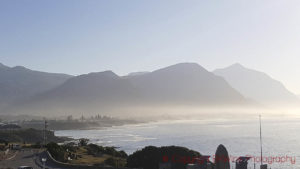 Whales, mountains and wines with personality will feature on the November wine tour when it is is spring in South Africa, so it is a colourful, flourishing landscape that greets us. We meet in Cape Town and continue on to Hermanus on the south coast where we will taste Sauvignon Blanc and Pinot Noir from some high-quality producers. It is the whale season so we are looking forward to going out on a boat for a close encounter with these giants of the sea.
Whales, mountains and wines with personality will feature on the November wine tour when it is is spring in South Africa, so it is a colourful, flourishing landscape that greets us. We meet in Cape Town and continue on to Hermanus on the south coast where we will taste Sauvignon Blanc and Pinot Noir from some high-quality producers. It is the whale season so we are looking forward to going out on a boat for a close encounter with these giants of the sea.
Then we will continue to Franschhoek, Paarl and Stellenbosch. We enjoy the landscape, the mountains, the food and, the most important thing, the wines. Some sightseeing is included, of course, such as the Table Mountain and the Cape of Good Hope. South Africa is magnificent. And you will discover wines with a real personality.
Come and enjoy this wine tour to South Africa with us in November 2018.
For the long term planners: more southern hemisphere | wine tours
We already know that winter 2019 will be cold and dark, so we have planned two fantastic destinations for you to brighten up your winter. The full planning is not yet finishes but here are the destinations and the times. If you are interested, contact us already now and you will be the first to hear about it when it is available:
Chile and Argentina in January 20 – February 4, 2019, the two leading South American wine countries.
South Africa, February 2019. The world’s biggest chenin blanc country, with world-class whites and reds.
New Zealand, March 11-26, 2019, a stunningly beautiful country mostly famous for sauvignon blanc and a bit of pinot (for wine) but that has so much more outstanding wine to offer!
Don’t be an egoist! Share with your friends and other wine enthusiasts! Forward the Brief to your friends! Suggest that they sign up for a free subscription !
© Copyright BKWine







